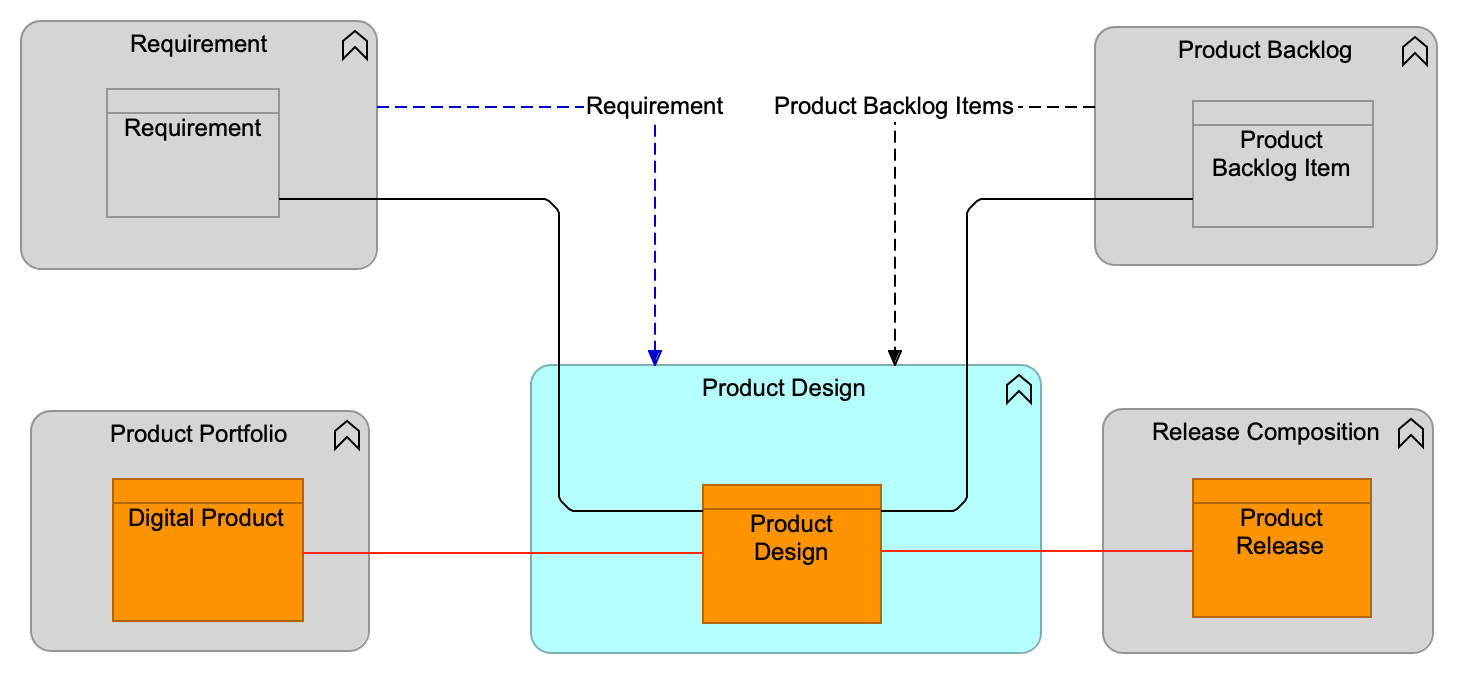Product Design Functional Component

Purpose
The Product Design functional component creates and maintains the Product Design associated with a Digital Product. This functional component ensures the architecture and Product Design of the Digital Product meets specified requirements, is in line with the Enterprise Architecture, and adheres to standards and polices.
The Product Design functional component describes the structure and behavior of the services offered by the product, taking into consideration both the desired product and the associated Service Offers. Various design artifacts (e.g., UML® diagrams, API specifications, data models, process designs, user experience design) can be created that comply with the Product Backlog Item specifications, Requirements, and product vision. The service delivery model (e.g., in-source, outsource) can be identified, together with the service providers who will meet the Requirements within the chosen delivery model.
The Product Design should include instrumentation so that objective data can be captured on how the digital services are performing rather than relying only on consumer feedback. The service should also be architected to meet the KPIs and SLAs (and associated SLOs) and to ensure that appropriate Service Monitors are included in the Product Release.
The output of the Product Design functional component will be used by the Source data object to source, create, and secure the service, and the traceability will be done through the Requirement functional component.
The Product Design functional component supports the value streams:
Functional Criteria
The Product Design functional component:
-
Shall be the system of record (authoritative source) for all Product Designs
-
Shall identify the required changes in the Product Design to meet the needs of the Product Backlog Items and associated Requirements
-
Shall maintain the design of the Digital Products and its sub-components/parts
-
Shall maintain the design of the data model (mapped to the Enterprise Data catalog to understand what data is managed and/or used by the Digital Product)
-
Shall maintain the design of the integrations (and related data flows) of the Digital Product with other Digital Products (to understand dependencies and integrations with other products)
-
Shall maintain the design related to the security model, covering user profiles, roles, and associated access rights
-
Shall maintain various design artifacts (such as use-case diagrams, data models, data flow diagrams, interaction diagrams) that comply with the Product Backlog Item specifications and boundaries
-
Shall maintain the design of how the product enables/supports the customer journeys and business processes (if applicable)
-
Shall cover the user experience in the design
-
Shall identify the product delivery model (e.g., buy or build, in-source, outsource)
-
Shall maintain the infrastructure design for hosting the Digital Product (with the associated technology products)
-
May identify service suppliers to meet the Requirements within the chosen delivery model
-
Shall maintain the design of operations and support features of a product, including the support model, monitoring, and design for self-service (designing service interactions through the Service Offer Catalog)
-
Shall document instrumentation so that empirical data can be captured to measure how the digital services are performing, rather than relying only on anecdotal input from the user community
-
Shall document how the Digital Product complies with the non-functional requirements, including security, privacy, legal (Secure, Privacy, and Compliance by Design)
-
Shall document how the product is architected to meet the SLOs, including availability and performance, as well as XLAs
-
Shall receive the Digital Product specifications and product vision from the Product Portfolio functional component
-
Shall provide the ability to collaborate on the design artifacts, including reviews, capturing feedback, and comments